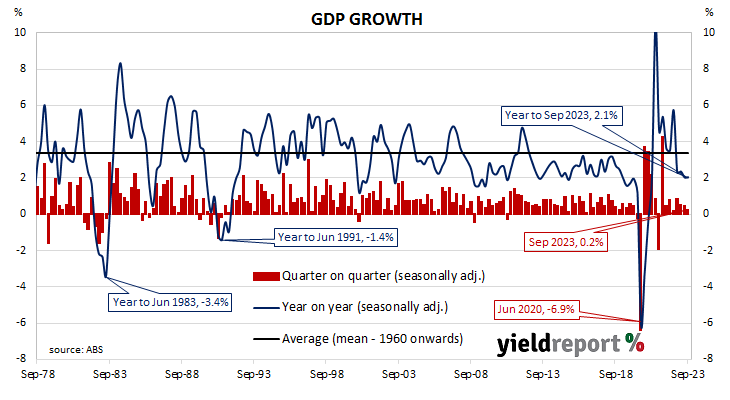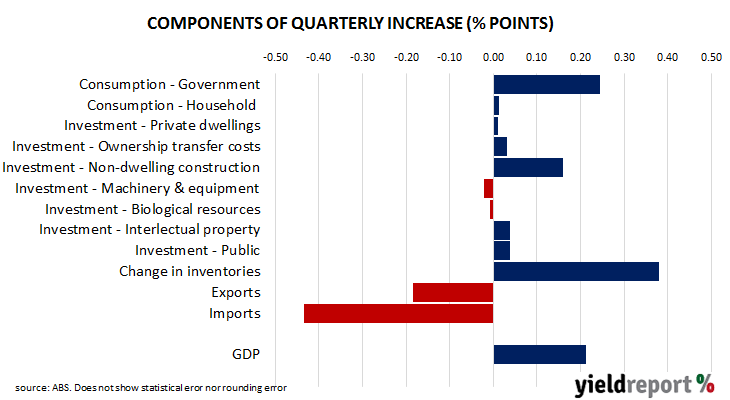Summary: Australia’s GDP up 0.2% in September quarter, less than expected; Westpac monetary and fiscal policies crimping domestic demand; ACGB yields fall heavily; rate-fall expectations harden; ANZ: accounts points to ongoing softness in activity; imports, inventories major influences in quarter.
Since the “recession we had to have” as the recession of 1990/91 became known, Australia’s GDP growth has been consistently positive, with only the odd negative quarter here and there. However, Australia’s first recession in nearly thirty years was inevitable in 2020 once governments introduced restrictions which shut businesses and limited people’s movements for an extended period of time. Growth rates have been positive since then, although the September 2021 quarter proved to be the exception after restrictions were reintroduced in eastern states.
The latest figures released by the ABS indicate GDP rose by 0.2% in the September quarter. The result was less than the generally expected figure of 0.4% which was also the growth rate in the June quarter. On an annual basis, GDP expanded by 2.1%, up from 2.0%.
“The National Accounts data update shows decisively that the combined effect of monetary and fiscal policies is crimping domestic demand and bringing it back into balance with supply,” said Westpac Chief Economist Luci Ellis.
Commonwealth Government bond yields fell heavily on the day, outpacing significant falls of US Treasury yields overnight. By the close of business, the 3-year ACGB yield had lost 11bps to 3.89%, the 10-year yield had shed 13bps to 4.29% while the 20-year yield finished 14bps lower at 4.57%.
In the cash futures market, expectations regarding rate cuts hardened. At the end of the day, contracts implied the cash rate would remain close to the current rate of 4.32% and average 4.31% in January and 4.335% in February. May 2024 contracts implied a 4.265% average cash rate while August 2024 contracts implied 4.16%, 17bps less than the current rate.
“With a strong contribution to quarterly growth from inventories, and the household aggregates in this release showing increased pressure on consumers, the detail of the accounts points to ongoing softness in activity,” said ANZ Head of Australian Economics Adam Boyton.
Imports increased by $2.6 billion, subtracting 0.43 percentage points from the quarter’s overall result, while a $2.3 billion slowing of inventory contraction contributed 0.38 percentage points. Government consumption growth added 0.24 percentage points.



